
Northeast Indiana unfolds in a patchwork of open farmland, quiet lakes, and small towns that seem to move at their own pace. Away from the noise of larger cities, the region offers space to breathe—wide skies above, winding country roads below, and the kind of stillness that invites a slower rhythm.
These towns are more than dots on a map. Each one carries its own story, shaped by generations of farming, small industry, and community gatherings that have kept neighbors connected for decades. Life is measured not by rush-hour schedules, but by planting and harvest, by local festivals, and by the seasons themselves.
Visitors often come seeking a retreat, drawn by the promise of lakeside mornings, tree-lined main streets, and the quiet companionship of nature. In these places, the air feels lighter, the pace more forgiving, and the landscapes—whether fields, rivers, or woodlots—seem to stretch endlessly toward the horizon.
This list counts down 25 of the most secluded and charming towns in Northeast Indiana, each offering its own blend of rural character and calm. From historic railroad hubs to riverside hamlets, they remain havens where the modern world slips to the background, replaced by the enduring pull of small-town life.
25. Corunna: Quiet Railroad Heritage
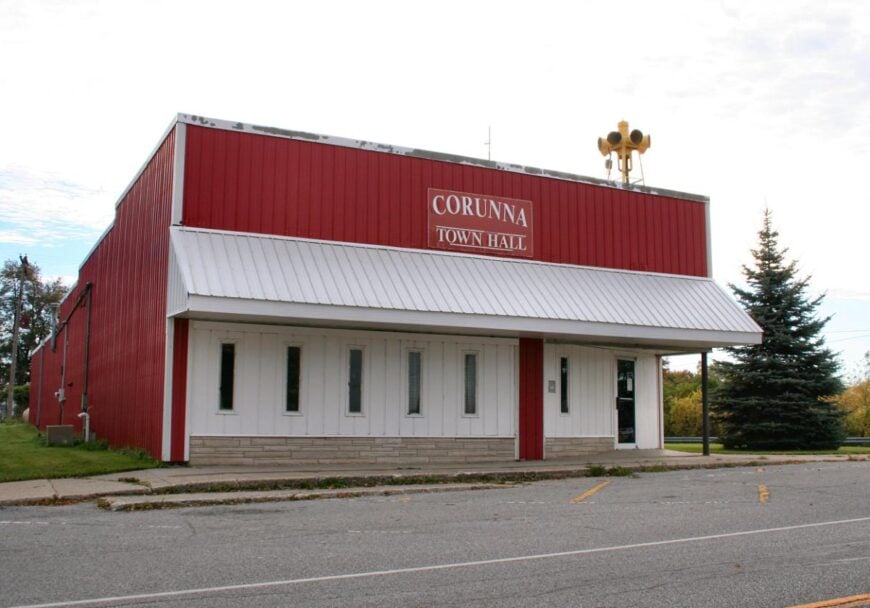
Corunna is a small dot on the map of northeastern Indiana, where open farmland and quiet two-lane roads keep it far from any rush. The hum of daily life is soft here—tractor engines in the distance, wind through the cornfields, and the occasional train passing on its way to bigger towns.
A short walk or drive leads to fishing spots along nearby creeks, shaded backroads perfect for cycling, or community events that bring neighbors together at the town park. With agriculture as its backbone, most work follows the rhythm of planting and harvest, shaping the year as predictably as the changing seasons.
Local diners and small shops serve as gathering points, where conversations stretch unhurried over coffee. By sunset, when the fields glow in fading light, Corunna feels like a place that’s been content to stay just as it is.
Where is Corunna?
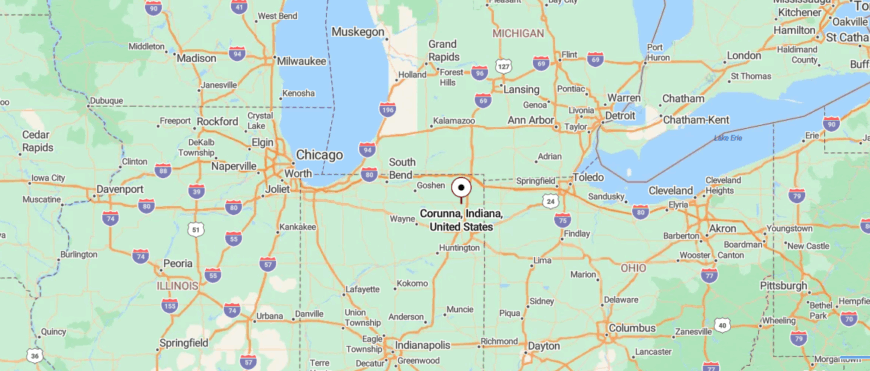
Corunna is a small town in northeastern Indiana, in DeKalb County, surrounded by flat farmland and quiet country roads. It’s about 8 miles southwest of Auburn, reached by U.S. Highway 6 as it cuts through open fields and clusters of rural homes.
The approach is simple and uncluttered, with wide skies and long views in every direction. It’s close enough to neighboring towns for daily needs, yet feels firmly set in its own calm, rural space.
24. Avilla: A Small-Town Retreat
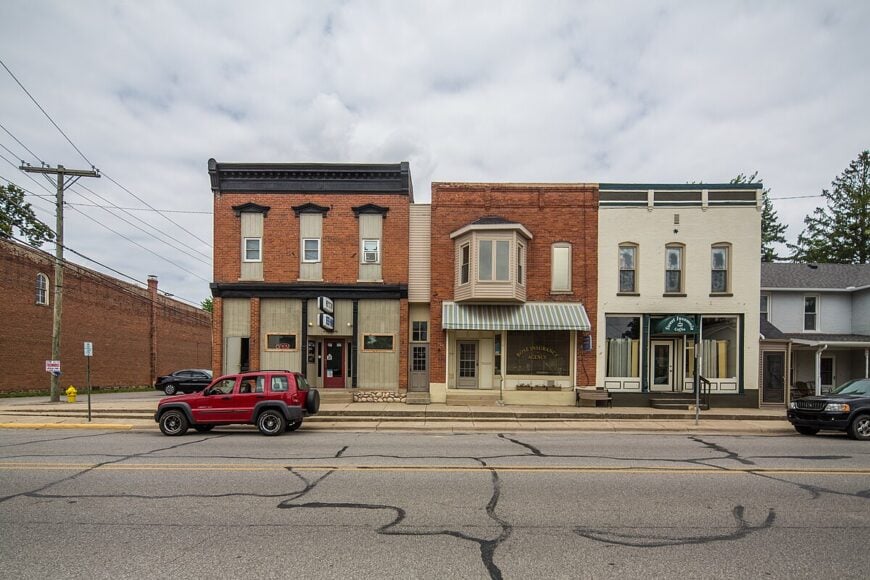
Avilla sits where small-town charm meets the quiet stretch of Indiana farmland, its streets lined with old trees and historic buildings. The heart of the community beats around Main Street, where local shops, cafés, and the town library welcome both neighbors and visitors.
Outdoor spaces like Eley Memorial Park offer walking paths, playgrounds, and picnic spots, while nearby trails wind into the countryside. Annual events, from summer festivals to holiday parades, bring the whole town together in celebration.
Manufacturing, retail, and farming keep the economy steady, blending tradition with modern work. As evening settles in and porch lights flicker on, Avilla feels like a place where the day ends as gently as it began.
Where is Avilla?
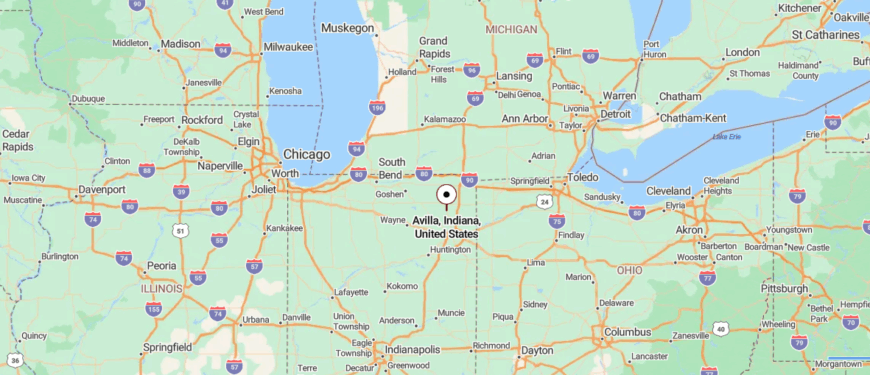
Avilla is located in northeastern Indiana, in Noble County, surrounded by gently rolling farmland and pockets of woodland. It’s about 7 miles southeast of Kendallville, reached by State Road 3 or State Road 8, which pass through open fields and quiet residential stretches.
The approach blends small-town storefronts with views of silos and barns on the horizon. It’s easily accessible, yet carries the unhurried pace of a community set apart from busier routes.
23. Pleasant Lake: Lakeside Seclusion
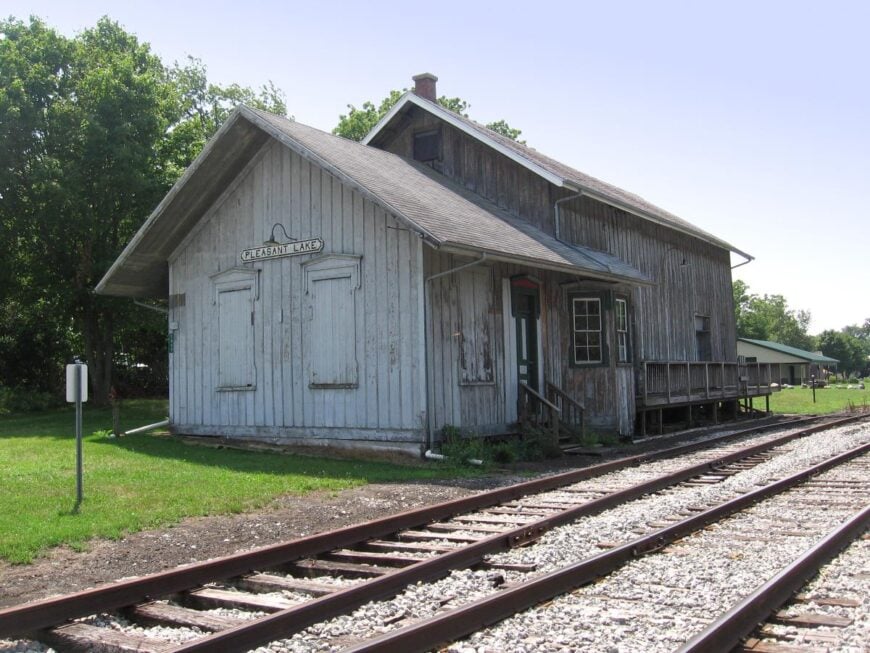
Pleasant Lake rests along its namesake waters, a quiet stretch of shoreline surrounded by wooded edges and open farmland. Mornings often bring the call of waterfowl and the gentle lap of waves against the docks, setting a pace that feels far from the noise of city life.
Locals and visitors spend their days fishing, kayaking, or simply sitting by the water watching the light shift across the lake. A small cluster of homes, cottages, and a few businesses forms the heart of the community, where neighbors greet each other by name.
Farming and lake-centered recreation shape much of daily life, giving it both a working rhythm and a leisurely one. As the sun dips low, Pleasant Lake lives up to its name—still, calm, and quietly inviting.
Where is Pleasant Lake?
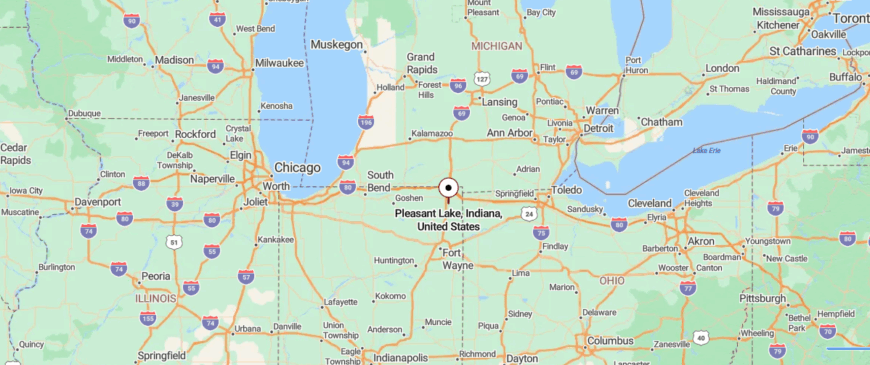
Pleasant Lake sits in the northeastern corner of Indiana, in Steuben County, just south of Angola. It’s about 5 miles from Interstate 69, reached by local county roads that wind past open farmland and small wooded areas.
The drive in offers glimpses of its namesake lake, framed by cottages and quiet shorelines. It’s near enough to larger towns for convenience, yet feels like a peaceful spot tucked between water and countryside.
22. Waterloo: A Historic Rural Hub
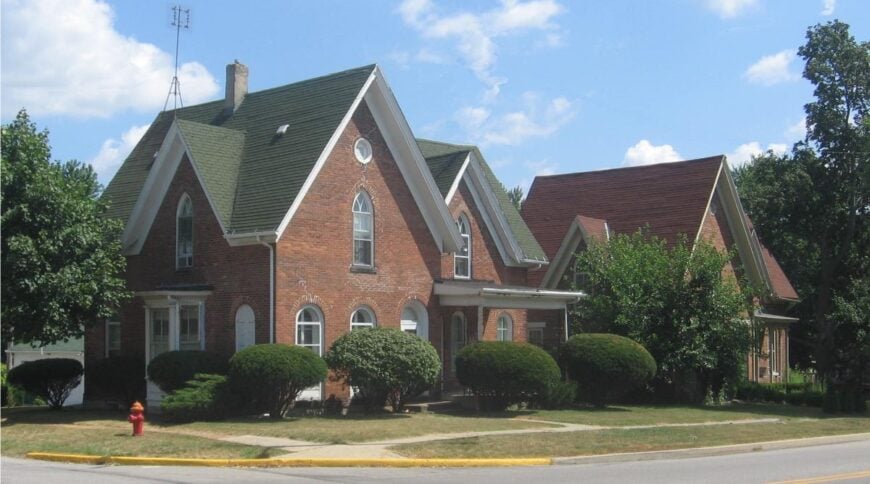
Waterloo sits along the old rail lines of northeastern Indiana, where trains still rumble through and mark the hours of the day. Its downtown holds a mix of historic brick buildings, small shops, and cafés that serve as gathering spots for locals.
The town’s history is tied to the railroad, a story preserved in its depot and community events that celebrate that heritage. Nearby parks and country roads offer space for walks, bike rides, and quiet drives through farmland.
Manufacturing and small businesses provide steady work, keeping the town connected to the surrounding region. By nightfall, as the last train passes under the streetlights, Waterloo feels like a place that balances movement with a deep-rooted calm.
Where is Waterloo?
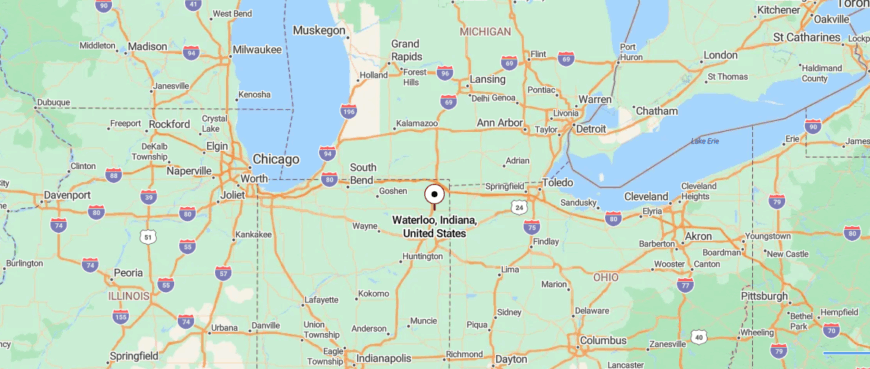
Waterloo is in northeastern Indiana, in DeKalb County, set amid farmland and small-town neighborhoods. It’s about 6 miles north of Auburn along U.S. Highway 427, with easy access from Interstate 69.
The route in passes fields, grain silos, and stretches of tree-lined road that open into the town’s historic center. It’s well connected for travel, yet keeps the slower, close-knit feel of rural Indiana.
21. Ashley: A Simple Countryside Stop
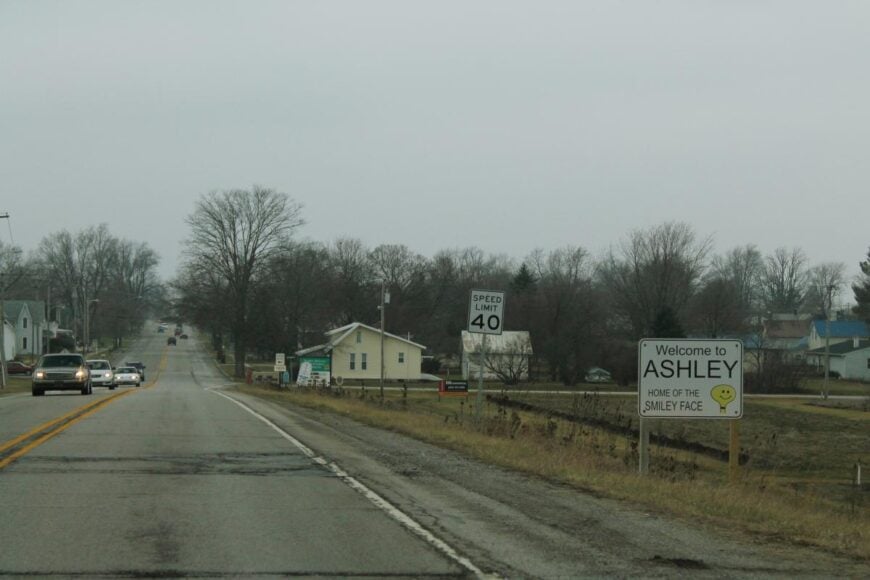
Ashley is a crossroads town in northeastern Indiana, where wide farmland stretches in every direction and grain silos rise above the horizon. Its streets are quiet, lined with modest homes, a few long-standing shops, and the familiar water tower that marks its center.
Life here follows a steady rhythm—morning commutes, afternoons in the fields, and evenings spent on porches watching the light fade. Residents can take short drives to nearby fishing lakes, wander rural backroads, or join in small-town gatherings that keep the community close-knit.
Agriculture remains the backbone of daily life, supported by local businesses that have served generations. As dusk settles, Ashley feels wrapped in the kind of stillness that lingers long after the day is done.
Where is Ashley?
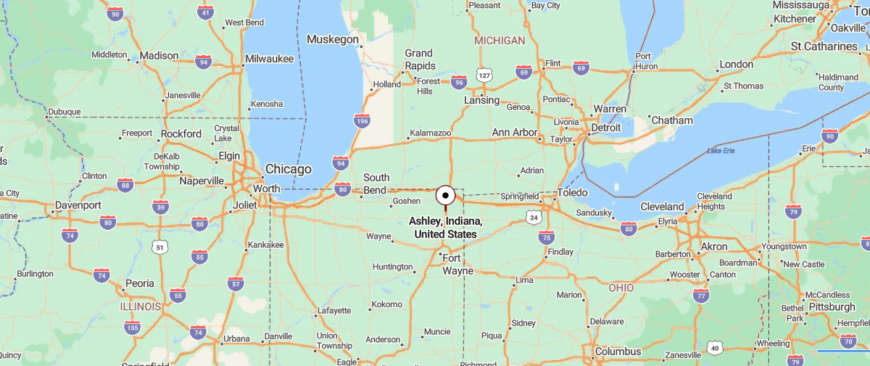
Ashley sits in the northeastern part of Indiana, straddling the line between DeKalb and Steuben counties. It’s about 9 miles north of Auburn, reached via Interstate 69 or State Road 4, with roads that pass farmland and open fields.
The approach is straightforward, shifting from wide rural views to a compact grid of small-town streets. It’s close to major routes, yet feels like a quiet stop tucked into the countryside.
20. Leo-Cedarville: Riverside Calm
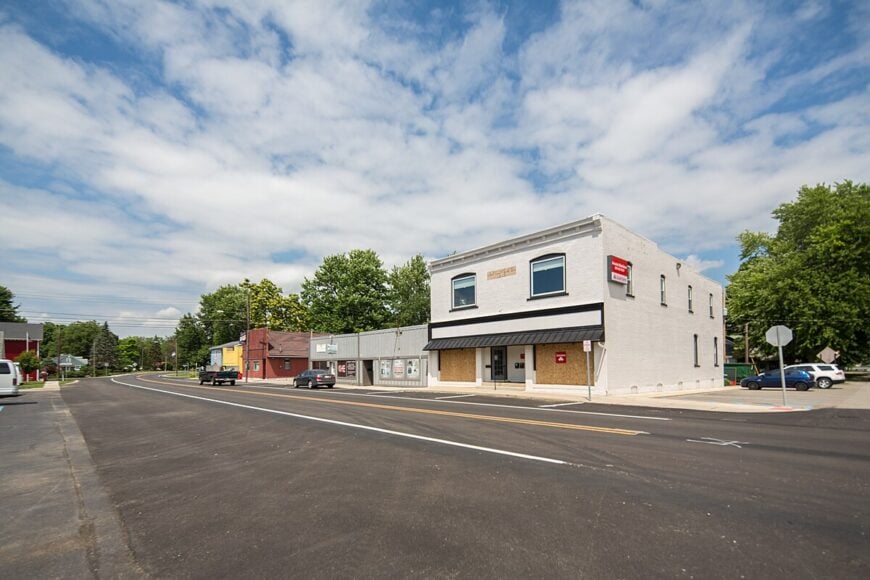
Leo-Cedarville sits where the St. Joseph River winds through northeastern Indiana, its waters curling past parks, neighborhoods, and farmland. The town blends small-community life with easy access to outdoor spaces, from riverside trails at Riverside Gardens to fishing spots and boat launches along the water.
Tree-lined streets connect quiet residential areas to local shops, cafés, and gathering places where neighbors meet. Seasonal events and farmers markets bring bursts of activity, showcasing the area’s strong agricultural ties.
Many residents work in nearby Fort Wayne while keeping roots planted in the town’s slower pace. By the time the river reflects the evening sky, Leo-Cedarville feels like a place shaped as much by water as by the people who call it home.
Where is Leo-Cedarville?

Leo-Cedarville is located in northeastern Indiana, in Allen County, along the banks of the St. Joseph River. It’s about 11 miles northeast of Fort Wayne, reached by State Road 1, where the drive passes neighborhoods, open fields, and pockets of woodland.
The approach blends riverside scenery with the charm of a compact town center. It’s near enough to the city for easy access, yet holds the slower rhythm of a community shaped by its natural surroundings.
19. Grabill: Amish Country Peace
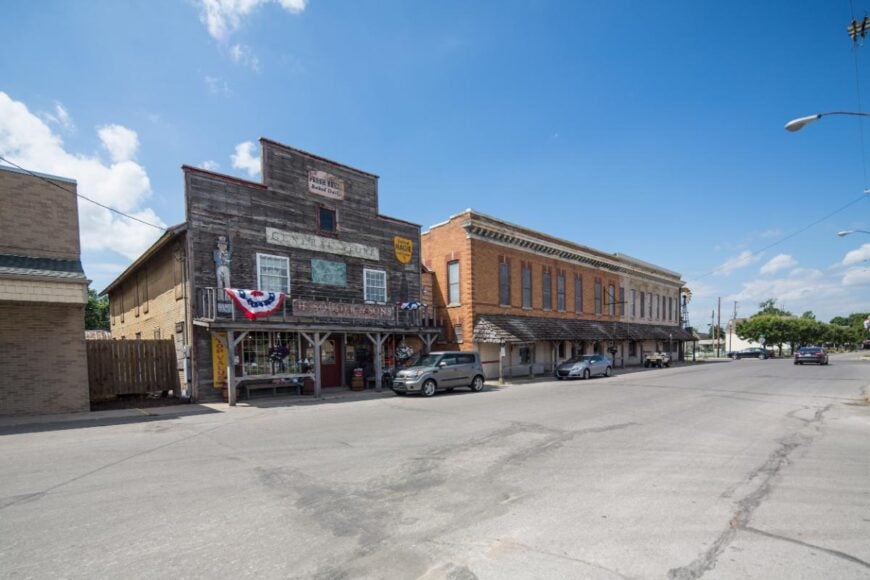
Grabill is known for its strong Amish and Mennonite heritage, where horse-drawn buggies share the road with cars and hand-painted signs point to farm stands. The heart of town holds antique shops, country stores, and cafés that serve homemade pies and fresh-baked bread.
Visitors can browse local markets for produce, crafts, and quilts or attend annual festivals that celebrate the area’s rural traditions. Just beyond the main street, fields stretch to the horizon, dotted with barns and windmills.
Agriculture and small family businesses form the backbone of daily life, keeping the community closely tied to the land. As the day winds down, Grabill feels like a step back in time, where the rhythm of life is set by work, seasons, and shared history.
Where is Grabill?
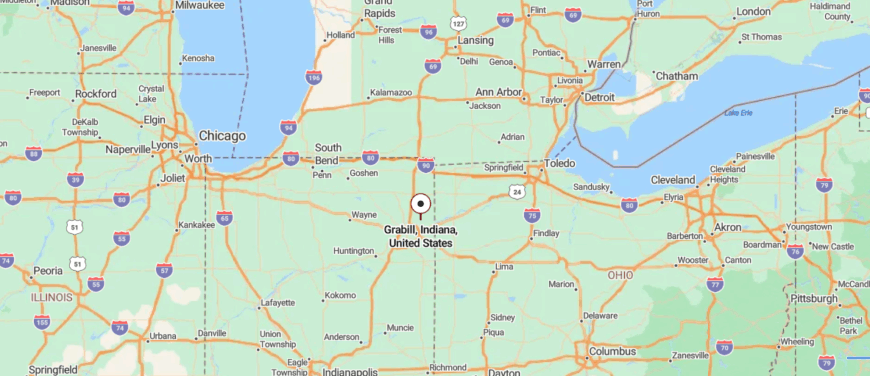
Grabill is in northeastern Indiana, in Allen County, surrounded by farmland and known for its strong Amish and Mennonite presence. It’s about 15 miles northeast of Fort Wayne, reached by State Road 37 and local roads that pass horse-drawn buggies, produce stands, and tidy farmsteads.
The approach offers a mix of open fields and clusters of weathered barns that hint at the area’s rural heritage. It’s close enough to the city for convenience, yet feels worlds away in pace and atmosphere.
18. Hudson: Rural Simplicity
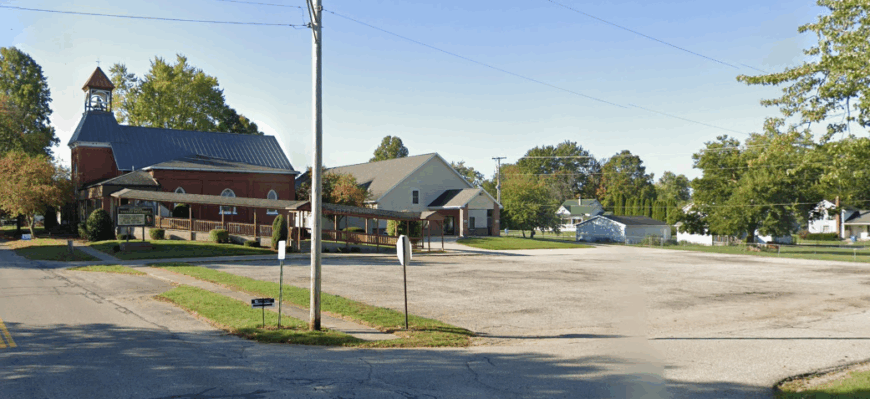
Hudson is a quiet farming community in northeastern Indiana, where open fields and country roads stretch far beyond the town’s modest center. A few small businesses, churches, and the familiar grain silos mark its heart, surrounded by homes that have stood for generations.
Life here moves with the agricultural calendar—planting in spring, harvest in fall, and long winter evenings spent close to home. Residents find simple pleasures in fishing at nearby lakes, gathering for local events, or just enjoying the stillness of the countryside.
Farming remains the mainstay of the local economy, supported by a strong sense of neighborly connection. As twilight settles over the fields, Hudson feels steady and unchanged, as if time itself moves slower here.
Where is Hudson?
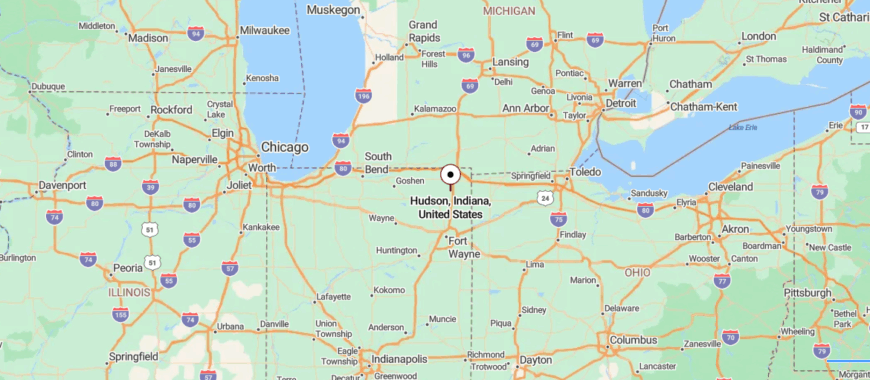
Hudson is located in the northeastern part of Indiana, in Steuben County, surrounded by open farmland and quiet backroads. It’s about 12 miles west of Angola, reached by State Road 4 as it passes fields, silos, and scattered farmhouses.
The drive in is simple and unhurried, with wide skies stretching over the landscape. It’s near enough to larger towns for daily needs, yet feels firmly rooted in its rural setting.
17. Butler: Railroad Roots in the Countryside
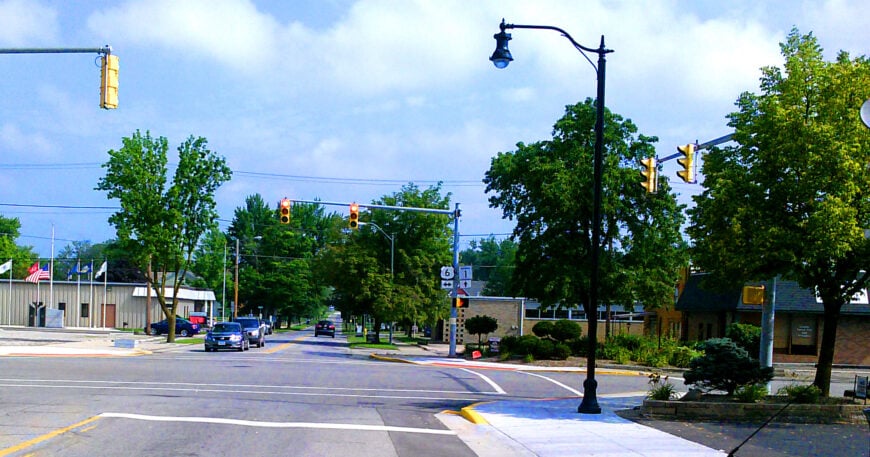
Butler sits in the northeast corner of Indiana, where the railroad still threads through town and open farmland frames the horizon. Its downtown holds a stretch of historic storefronts, small cafés, and shops that serve as gathering spots for the community.
Parks and nearby trails offer space for walks, sports, and seasonal events, while the countryside invites quiet drives past barns and fields. The town’s roots in agriculture and rail transport remain visible, even as small industries and local businesses keep it moving forward.
Neighbors know each other by name, and conversations often linger long after errands are done. As the last train of the day passes under the fading sky, Butler feels like a place that balances its working past with a calm, steady present.
Where is Butler?
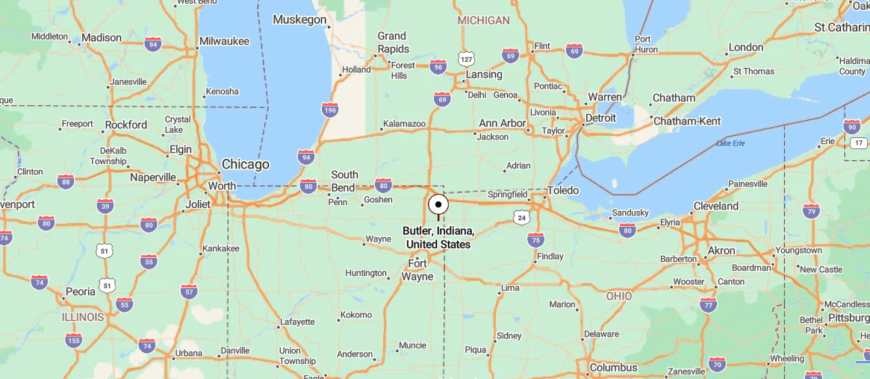
Butler sits in the far northeastern part of Indiana, in DeKalb County, surrounded by flat farmland and quiet country roads. It’s about 12 miles east of Auburn, reached by U.S. Highway 6 as it runs past fields and small clusters of homes.
The approach is open and expansive, with the town’s grain elevators visible from a distance. It’s close enough to regional routes for easy travel, yet keeps the pace of a small rural community.
16. St. Joe: Riverside Seclusion
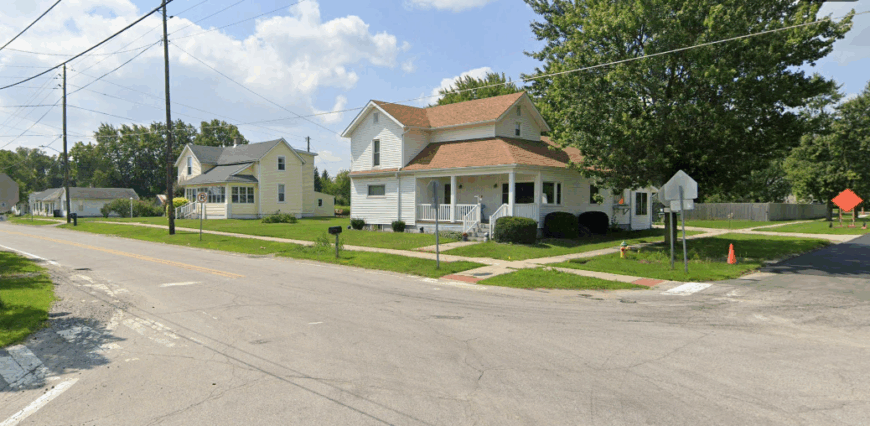
St. Joe is a small northeastern Indiana town known for its annual Pickle Festival, a celebration that fills its streets with music, food, and neighbors catching up. Surrounded by fertile farmland, it carries the scent of tilled earth in spring and fresh-cut hay in summer.
Daily life moves at an easy pace, centered around the local school, churches, and a few family-run businesses. The nearby St. Joseph River offers fishing, canoeing, and peaceful spots for watching the water drift by.
Agriculture anchors the economy, with generations working the same fields that define the landscape. By sunset, when the light spills across the river and the silos, St. Joe feels like a place both rooted and rare.
Where is St. Joe?
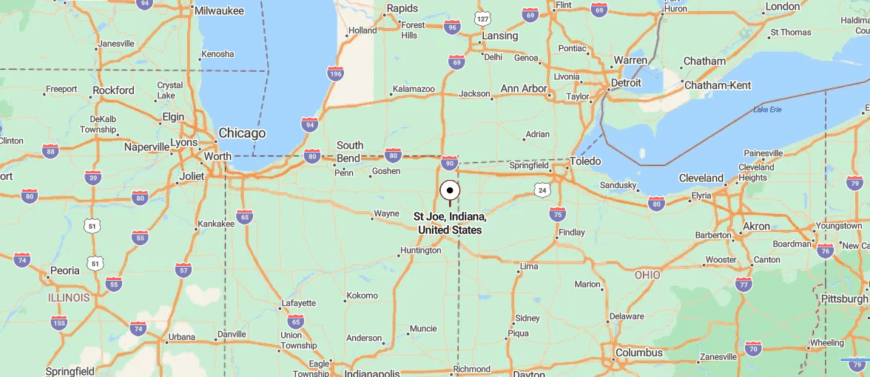
St. Joe is located in northeastern Indiana, in DeKalb County, along the banks of the St. Joseph River. It’s about 10 miles northeast of Auburn, reached by State Road 1 through a mix of farmland, wooded stretches, and quiet residential areas.
The drive in feels relaxed, with river views appearing as you near the town. It’s close to nearby hubs, yet carries the calm, close-knit feel of a riverside community.
15. Garrett: A Quiet Railroad Town
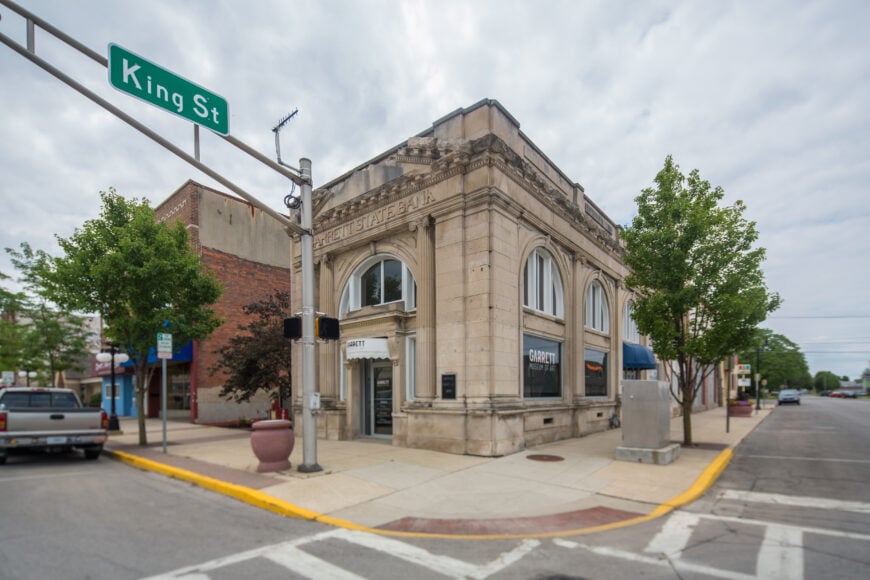
Garrett grew up around the railroad, and its historic depot still stands as a reminder of those early days when trains shaped the town’s rhythm. Neighborhoods of tree-lined streets lead into a downtown with shops, cafés, and the public library at its heart.
Heritage Park offers walking paths, playgrounds, and a quiet spot to pause, while the Garrett Museum of Art adds a creative touch to the community. Local events, from summer concerts to holiday parades, bring residents together throughout the year.
Manufacturing, small businesses, and nearby farming keep the economy steady and varied. As evening falls and the trains pass under the streetlights, Garrett holds onto both its working spirit and small-town ease.
Where is Garrett?
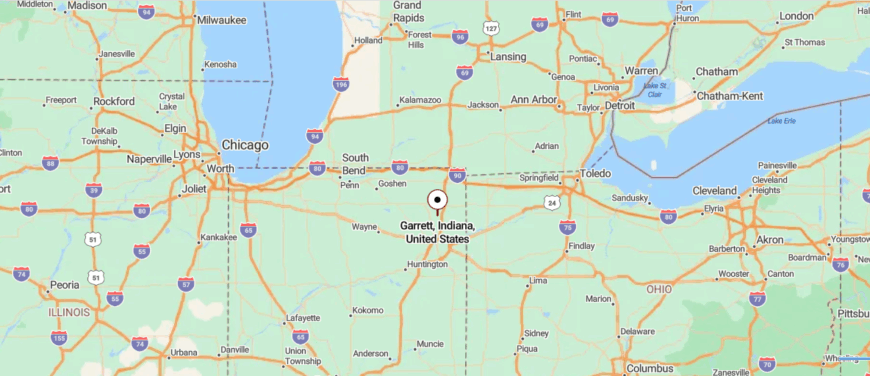
Garrett is in northeastern Indiana, in DeKalb County, set between open farmland and historic rail lines. It’s about 7 miles northwest of Auburn, reached by State Road 327 or Interstate 69, with roads that pass fields and clusters of homes.
The approach blends small-town storefronts with traces of its railroad heritage. It’s well connected for travel, yet keeps the steady pace of a close-knit community.
14. Newville: Hidden Farmland Community

Newville rests along the banks of the St. Joseph River, surrounded by farmland, woodlots, and the gentle curve of country roads. With no bustling downtown, its life centers on homesteads, barns, and fields that change with the seasons.
The river offers quiet fishing spots, canoe routes, and views where wildlife drifts in and out of sight. Community ties run deep here, with gatherings often happening at local churches or in backyards over shared meals.
Farming remains the backbone of daily life, supported by the steady rhythm of rural work. As dusk settles over the water and fields, Newville feels like a place where time keeps its own pace.
Where is Newville?
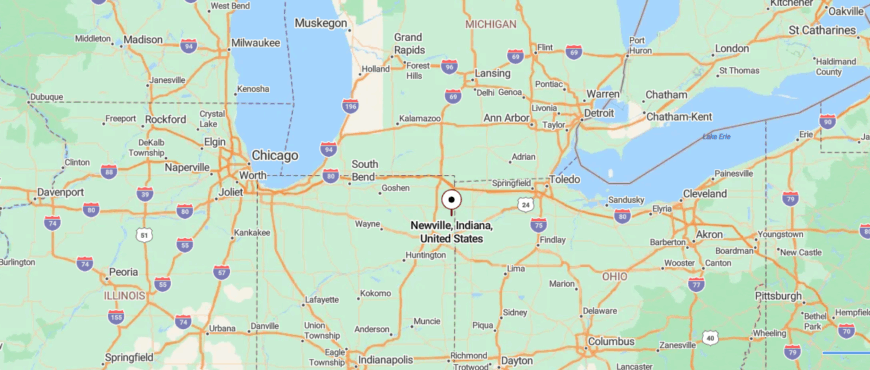
Newville is a small rural community in northeastern Indiana, in DeKalb County, surrounded by farmland and winding country roads. It’s about 8 miles southeast of Auburn, reached by local routes that pass open fields, woodlots, and occasional farmsteads.
The approach is quiet and scenic, with few signs of heavy traffic. It’s close enough to town for necessities, yet feels tucked deep into the countryside.
13. Cedar Creek Township: Natural Refuge
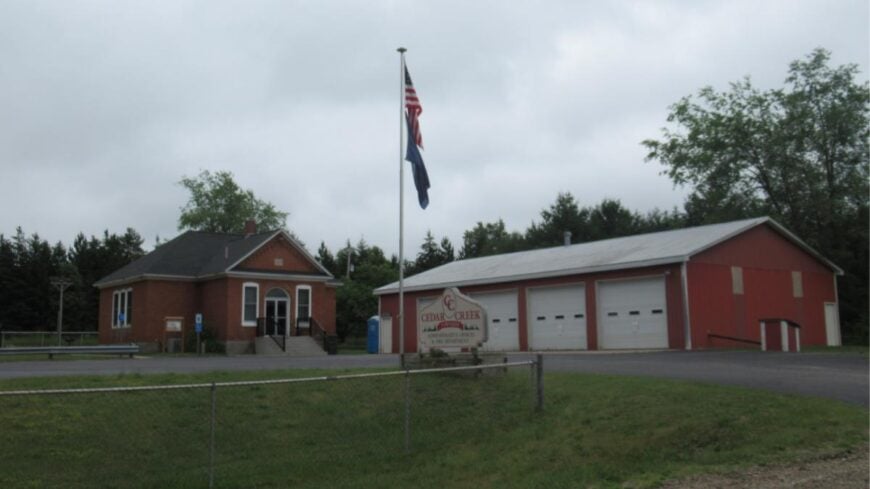
Cedar Creek Township spreads across a mix of wooded hills, open farmland, and winding roads that trace the northeastern Indiana landscape. Small clusters of homes sit among fields and forests, giving the area a quiet, rural feel while still being close to nearby towns.
Parks and natural areas along Cedar Creek provide spots for fishing, hiking, and watching wildlife, especially in the early morning mist. The community’s life revolves around agriculture, local gatherings, and the steady hum of work that follows the seasons.
Residents value the space and privacy the township offers, along with the neighborly bonds that tie them together. By sunset, with fields turning gold and the creek moving gently through the trees, it feels like a place made for unhurried living.
Where is Cedar Creek Township?
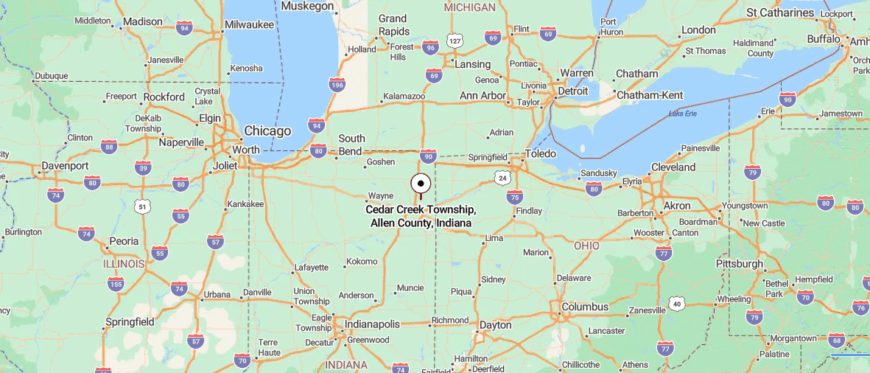
Cedar Creek Township is in northeastern Indiana, in Allen County, stretching across a mix of farmland, wooded areas, and small communities. It’s about 12 miles north of Fort Wayne, reached by State Road 1 or local county roads that weave through open fields and shaded lanes.
The drive in offers glimpses of rivers, ponds, and quiet residential pockets. It’s near enough to the city for convenience, yet feels rooted in a calm, rural landscape.
12. Concord Township: Wide-Open Countryside
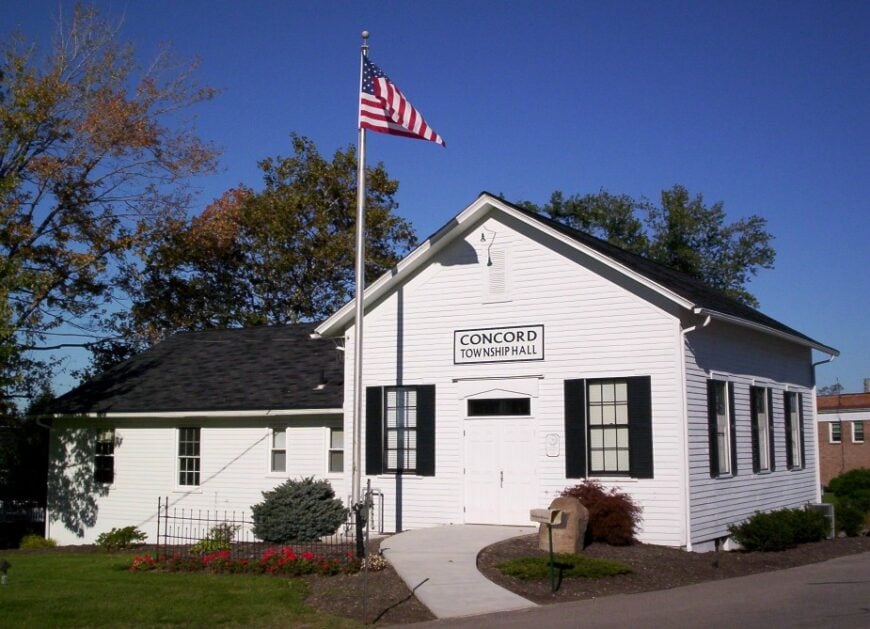
Concord Township unfolds in broad stretches of farmland broken by pockets of woodland and the occasional winding creek. Its roads are quiet, connecting homesteads, barns, and fields that mark the passing seasons with color and texture.
Life here centers on agriculture, from planting in the spring to harvest in the fall, with community gatherings often tied to that rhythm. Residents enjoy simple pastimes—fishing in nearby streams, cycling along backroads, or meeting neighbors at local churches and township events.
The pace is steady, shaped by work and the land rather than the clock. As twilight settles over the fields, Concord Township feels like a place that’s always known the value of unhurried living.
Where is Concord Township?
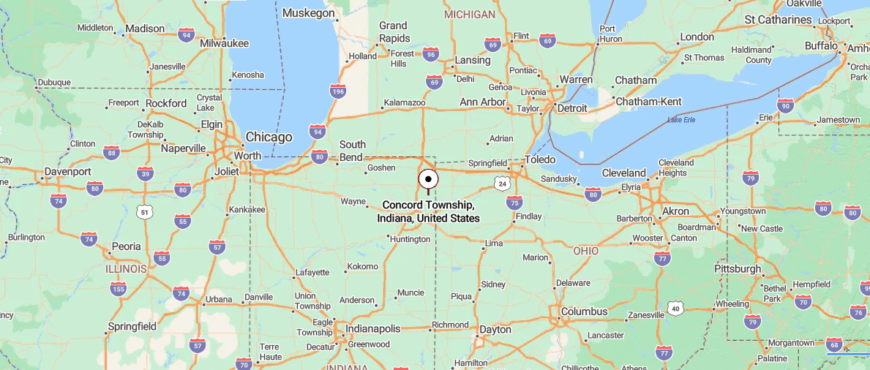
Concord Township is in northeastern Indiana, in DeKalb County, surrounded by farmland, scattered woodlots, and small rural communities. It’s about 9 miles east of Auburn, reached by U.S. Highway 6 and local county roads that pass silos, barns, and open fields.
The drive in is wide and uncluttered, with long views across the flat countryside. It’s close enough to neighboring towns for daily needs, yet carries the quiet, unhurried pace of rural life.
11. Altona: Tucked Between Fields
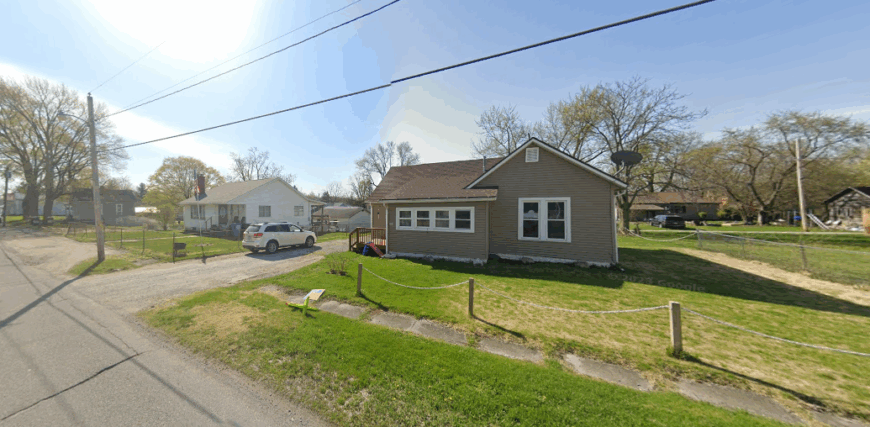
Altona sits quietly on the edge of Auburn, where its small cluster of homes meets the sweep of surrounding farmland. With no bustling business district, its life revolves around residential streets, backyard gardens, and the steady rhythm of rural work.
Nearby parks and Auburn’s shops are only minutes away, yet Altona keeps its own slower pace. Neighbors often gather in driveways or on porches, sharing news as the day winds down.
Farming and local trades provide the backbone of its economy, with most daily life rooted close to home. By sunset, when the fields catch the last light, Altona feels like a quiet pause between town and country.
Where is Altona?
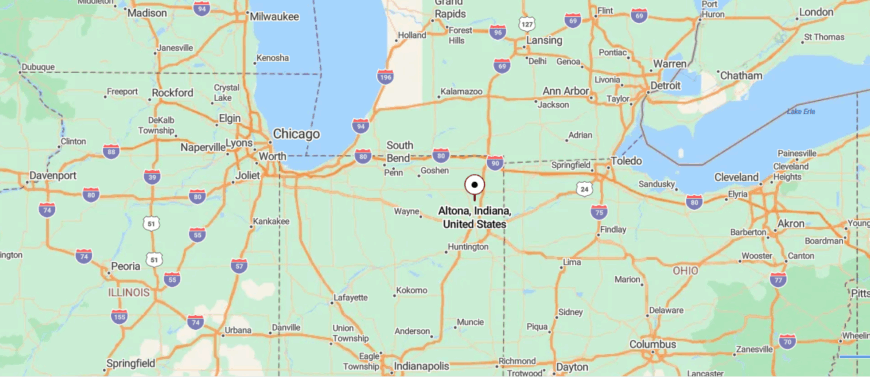
Altona is a small community in northeastern Indiana, in DeKalb County, bordering the southern edge of Garrett. It’s about 6 miles northwest of Auburn, reached by State Road 327 or local roads that pass neighborhoods, fields, and patches of woodland.
The approach is short and straightforward, with the town blending into the surrounding countryside. It’s close to nearby hubs, yet retains the easygoing pace of a small residential area.
10. Collins: Calm and Secluded

Collins, with a population of just a few hundred residents, is a peaceful haven nestled in Whitley County. I love the quiet streets lined with historic homes, and the sense of community here is truly heartwarming. There’s not a lot of commercial activity, which adds to its secluded charm.
If you’re looking for activities, you can enjoy leisurely walks, bird watching, or simply relax and soak in the serene atmosphere. The main industry in Collins is agriculture, with many local families involved in farming for generations.
Its seclusion comes from its small size and the vast fields that stretch out in every direction, making it a perfect spot to disconnect from the hectic pace of modern life.
Where is Collins?

Collins is located in Smith Township, Whitley County, in Northeast Indiana. Its remote setting is enhanced by the surrounding farmland and the absence of major highways nearby. To get there, I usually take State Road 205 and then branch off onto local roads that wind through the picturesque countryside.
The journey itself feels like a step back in time, with scenic views that make the trip worthwhile. Collins is a place where the simplicity of rural living is embraced, and the peaceful environment is cherished by all who visit.
9. LaOtto: Countryside Serenity

LaOtto is a small unincorporated community in Noble County, home to around 1,500 residents. This quaint town offers a peaceful rural setting that’s perfect for those who appreciate the quiet life. I find the local antique shops and family-owned diners provide a charming touch to the community.
The main industries here are agriculture and small businesses that cater to the local population. What makes LaOtto truly secluded is its expansive agricultural surroundings and large lots that give residents plenty of space to breathe. The open fields and gentle rolling hills create a serene backdrop that’s hard to resist.
Where is LaOtto?

Nestled in Noble County, LaOtto sits comfortably along State Road 3. It’s conveniently located yet maintains a sense of seclusion due to its rural environment. When I drive to LaOtto, the journey through the countryside always relaxes me before I even arrive.
The town’s position away from bustling cities means fewer crowds and a slower pace of life. Access is straightforward via State Road 3, making it an easy escape for a day trip or a longer stay to soak in the tranquility.
8. Hamilton: Lakeside Serenity

Hamilton, nestled along the shores of Hamilton Lake in Steuben County, offers a serene blend of natural beauty and small-town charm. With a population of just over 1,500, it’s a close-knit community where faces quickly become familiar, and visitors are always greeted with warm hospitality.
The town boasts a rich connection to nature, evident in its beautiful lakefront and abundance of outdoor activities. From fishing and boating to enjoying peaceful sunsets by the water, Hamilton provides an idyllic escape from the hustle and bustle of city life.
Where is Hamilton?

Hamilton is located in the northeast corner of Indiana, straddling the line between Steuben and DeKalb counties. It’s easily accessible via State Road 1, which winds through rolling countryside and scenic landscapes.
Hamilton’s picturesque setting and relaxed pace make it a haven for those who treasure lakeside living and a strong sense of community. Whether you’re a resident or a visitor, the town’s tranquil environment invites you to slow down, connect with nature, and savor the simplicity of rural charm.
7. Ari: Hidden in Noble County

Ari is a small, unincorporated community tucked away in Noble County. While it’s easy to miss on a map, its secluded nature is precisely what makes it special to me. The population is minimal, giving it a tight-knit community feel.
There’s a tranquil charm in the rural landscapes, and the absence of commercial development adds to its appeal. Agriculture dominates the local industry, with expansive fields and farms defining the scenery.
Ari’s seclusion comes from its hidden location and the surrounding natural beauty that offers a peaceful escape from more populated areas.
Where is Ari?

Located in Noble County, Ari is off the beaten path, which contributes to its secluded atmosphere. I usually access it via local roads branching off from State Road 205. The journey to Ari takes you through rolling hills and lush fields, making it a delightful drive.
Its position away from highways and urban centers ensures a quiet environment, perfect for those seeking solitude. Ari is a gem hidden in the countryside, offering a slice of tranquility that’s hard to find elsewhere.
6. Dunfee: Seclusion Amidst Nature

Dunfee is an unincorporated community in Whitley County that offers a serene escape surrounded by nature. With a small population, it’s a place where I feel deeply connected to the environment.
The proximity to forests and large lots makes it ideal for outdoor enthusiasts like me who enjoy hiking, wildlife watching, and exploring wooded areas. Agriculture remains the backbone of the local economy. Dunfee’s seclusion is enhanced by its vast green spaces and the quiet that comes with being far from city life.
Where is Dunfee?

Dunfee is nestled in Whitley County, accessible via county roads that weave through picturesque landscapes. I’ve found the best way to get there is by taking State Road 14 and then venturing onto smaller roads that lead directly into the heart of Dunfee.
Its remote location, away from major transportation routes, ensures a peaceful environment. The journey is calming, and arriving in Dunfee feels like stepping into a haven of natural beauty and quietude.
5. Wallen: A Peaceful Rural Escape

Wallen, located in Allen County, is a small community that offers a peaceful rural escape. With a modest population, it’s a place where I can unwind and enjoy the simplicity of country living. The area is surrounded by natural beauty, including nearby parks and open agricultural land.
There aren’t many industries here aside from farming and local services, which adds to its tranquil atmosphere. Wallen’s seclusion stems from its location amidst vast farmlands and the absence of urban development, making it a perfect spot for those seeking respite from city life.
Where is Wallen?

Situated in Allen County, Wallen is conveniently accessible yet maintains a sense of seclusion. I usually reach it via Lima Road (State Road 3), which makes for an easy drive while still offering scenic rural views.
The town’s proximity to Fort Wayne provides the option of accessing city amenities while enjoying a secluded residence. Wallen’s location offers the best of both worlds: ease of access and a peaceful, quiet environment that I find incredibly appealing.
4. Yoder: Quiet Country Living

Yoder is a charming unincorporated community in Allen County that embodies quiet country living. With a population of just a few hundred, it offers a close-knit community feel that I really appreciate.
Expansive lands and farms dominate the area, providing picturesque views and a serene atmosphere. The main industry here is agriculture, with many families engaging in farming activities. Yoder’s seclusion is due to its rural setting, limited commercial development, and the tranquil ambiance that pervades the community.
Where is Yoder?

Located in Allen County, Yoder is accessible via State Road 1 and Yoder Road. I find the drive to Yoder peaceful, as it takes me through stretches of farmland and open skies. Its location away from major urban centers contributes to its quiet environment.
Despite being not too far from Fort Wayne, Yoder maintains a secluded feel that makes it an ideal place for those like me who enjoy the countryside without being completely isolated.
3. Edgerton: Borderline Serenity

Edgerton is an unincorporated area straddling the Indiana-Ohio border, offering a unique blend of cultures from both states. The small population contributes to its serene environment, and I enjoy the open spaces that define the landscape.
There’s minimal commercial development, which enhances its secluded feel. The main industries include agriculture and small local businesses serving the community. Edgerton’s seclusion is amplified by its location on the state line and the vast rural areas that surround it, making it a peaceful retreat.
Where is Edgerton?

Edgerton is situated in Jackson Township, Allen County, right on the Indiana-Ohio border. Getting there involves a scenic drive along State Road 37 until it merges with local roads leading into the community.
I appreciate how the town’s border location adds to its charm and peacefulness. The surrounding rural landscape and the lack of nearby urban centers make Edgerton a secluded spot perfect for a quiet getaway.
2. Spencerville: Tranquil Riverside Community

Spencerville, located in DeKalb County, is a tranquil community nestled along the St. Joseph River. With a population of around 300, it’s a place where I can truly relax and enjoy the simple pleasures of life. The historic Spencerville Covered Bridge is a highlight, offering a glimpse into the area’s rich past.
Recreational activities like fishing, canoeing, and picnicking by the riverside are popular here. The main industries are agriculture and small enterprises that cater to locals. Spencerville’s seclusion is due to its riverside location and the enveloping natural scenery, providing a serene environment away from busy city life.
Where is Spencerville?

Situated in DeKalb County, Spencerville is accessible via State Road 1 and County Road 68. The drive to Spencerville is one of my favorites, with the route hugging the river and passing through lush landscapes.
Its position along the St. Joseph River and distance from major highways contribute to its secluded feel. The town is a peaceful retreat, and getting there is as enjoyable as the destination itself.
1. Harlan: A Hidden Countryside Haven

Harlan is an unincorporated community in Allen County with a population of around 1,600 residents. I consider it a hidden haven surrounded by vast farmlands and open skies. The town offers a peaceful rural lifestyle, with local activities including community events, farmers’ markets, and enjoying the quiet countryside.
Agriculture is the main industry, with many families involved in farming and related businesses. Harlan’s seclusion comes from its expansive rural setting and the strong sense of community that makes it feel like a world away from urban bustle.
Where is Harlan?

Located in Springfield Township, Allen County, Harlan is easily accessible via State Road 37. I often take this route, enjoying the transition from cityscapes to rolling fields as I approach the town.
Harlan’s location away from major cities and its surrounding agricultural land enhance its secluded atmosphere. The town is a perfect example of Northeast Indiana’s rural charm, offering a peaceful environment that’s both welcoming and serene.






